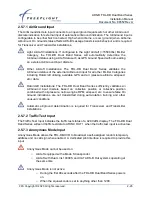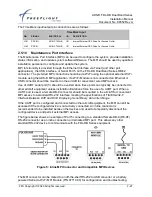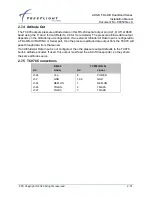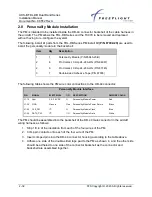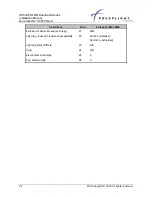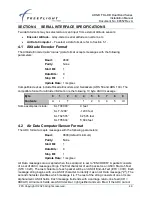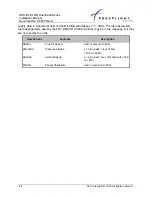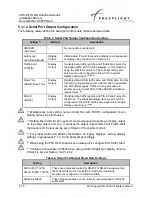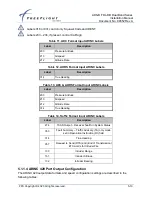
ADS-B FDL-DB Dual Band Series
Installation Manual
Document No. 88552 Rev A
FFS Copyright © 2020 All rights reserved.
2-37
•
For multiple-sensor installations, the installer should reduce the likelihood that a single
lightning strike affects all the sensors.
2.11.1
Antenna Power
The internal GPS of the FDL-DB Series utilizes an active antenna which means the antenna
includes a low noise amplifier. The power for the low noise amplifier is provided from the GPS
receiver via the antenna coax cable. No other installation considerations are necessary.
2.11.2
Recommended Cable for GPS
RG-400 or RG-142 cable with a maximum length of 50 ft is recommended. The cable, including
connectors, loss should not exceed 10dB.
For antennas mentioned in Section 1.4.31.7.1, RG-400 or RG-142 cable with a maximum length
of 25 ft is recommended. The cable including connectors, loss should not exceed 5dB.
2.11.3
SATCOM Compatibility
The FDL-DB Series internal GPS/WAAS Sensor has been shown via testing to be specification
compliant for single-channel SATCOM compatibility per RTCA/DO-229D.
Extra care should be exercised when installing GNSS equipment on aircraft with SATCOM
having multiple channels, as cautioned in Sec. 14-1 of AC 20-
138B. “
GNSS equipment is
particularly susceptible to out-of-band SATCOM emissions and in-band inter-modulation
between multiple channel SATCOM installations. GNSS equipment must not be installed in
aircraft with multiple SATCOM channels unless the simultaneous use of interfering
frequencies can either be prevented or demonstrated not to interfere with the operation of
the GNSS equipment.”
2.12
TC978 Static Pressure Connection
The TC978 Controller includes an altitude encoder which must be connected to the same
source of static pressure as the primary altimeter on the aircraft if this sensor is utilized in the
installation. The TC978 static pressure port provides a mounting spigot intended for nominal 5
mm or 3/16 in inside diameter tubing. A length of EPDM rubber tubing is included in the
installation kit to facilitate connection to the aircraft static system.
Choose a point in the existing static pressure line that is as close as practical to the TC978. Cut
the static pressure line and use the supplied T fitting to connect the altitude encoder. Take care
not to contaminate the inside of the static line when cutting or inserting the connectors.
In all cases, the static line should include drainage provisions and should be routed
in accordance with CS 23.1325 or other applicable airworthiness provisions for the
aircraft.



